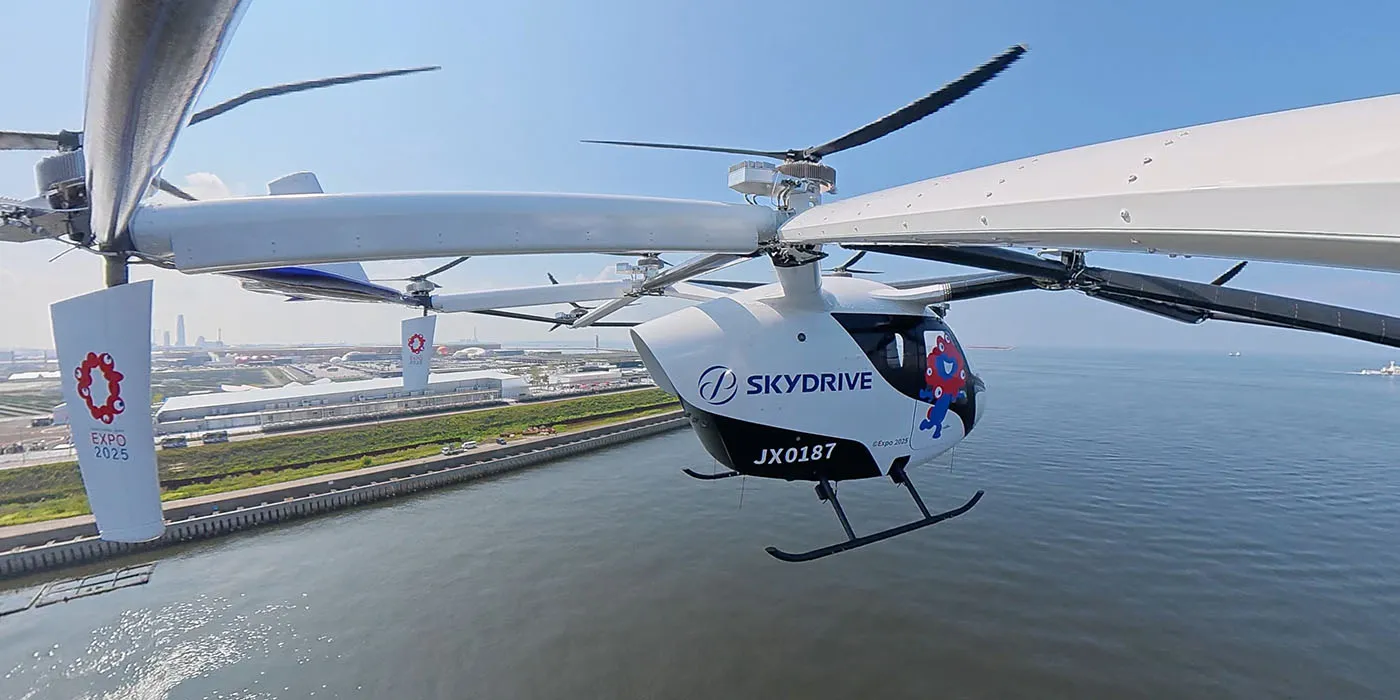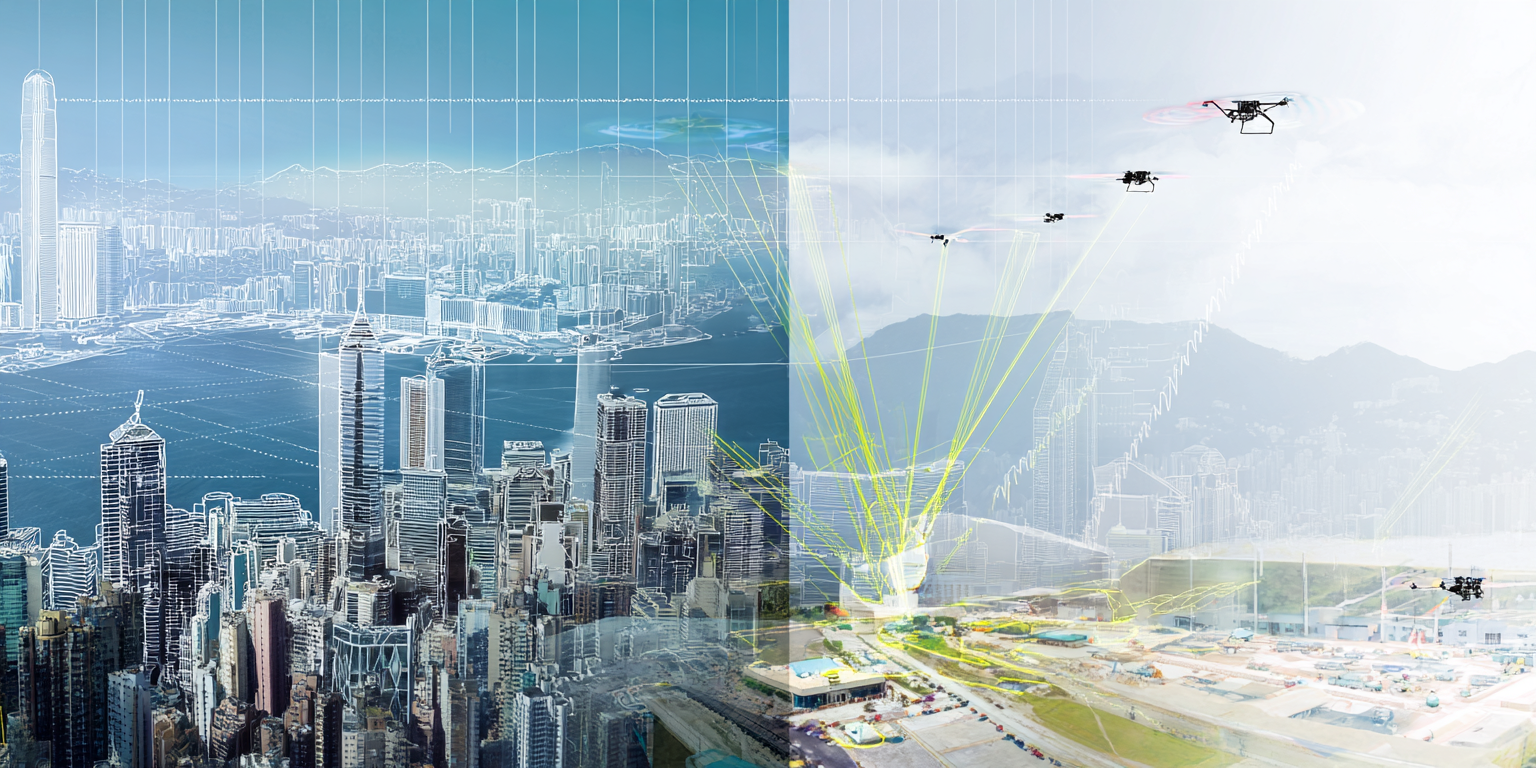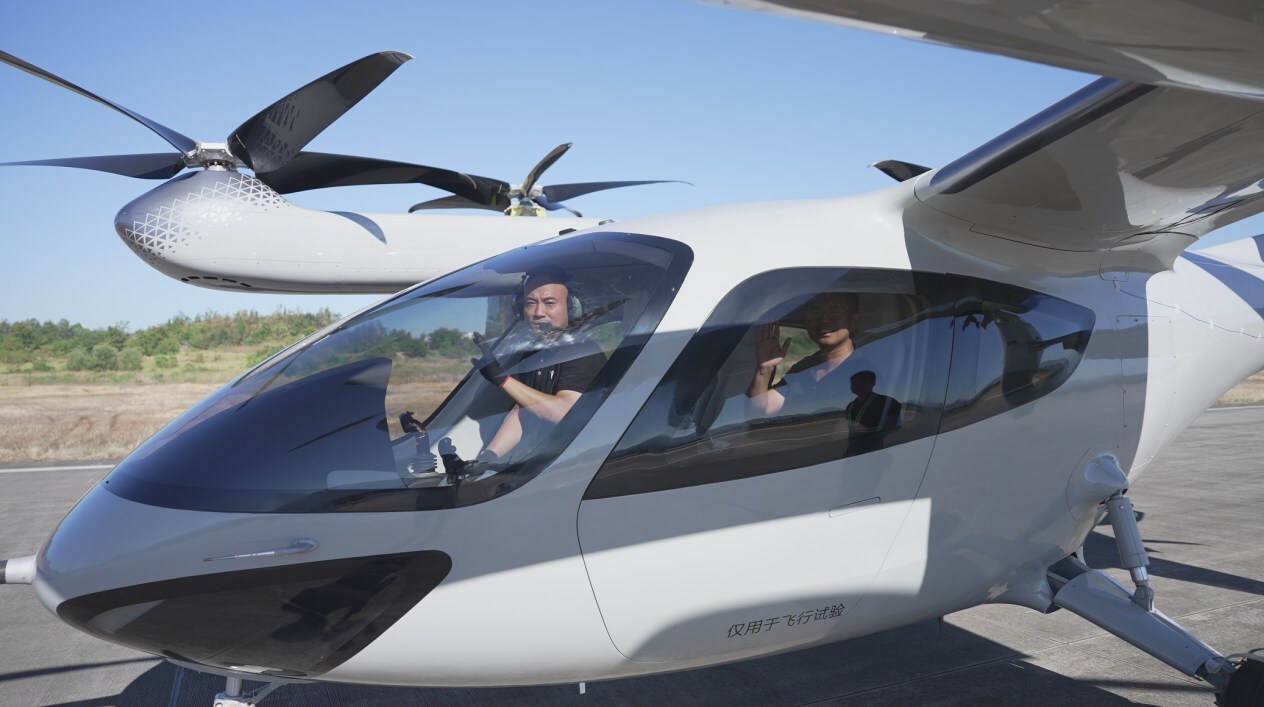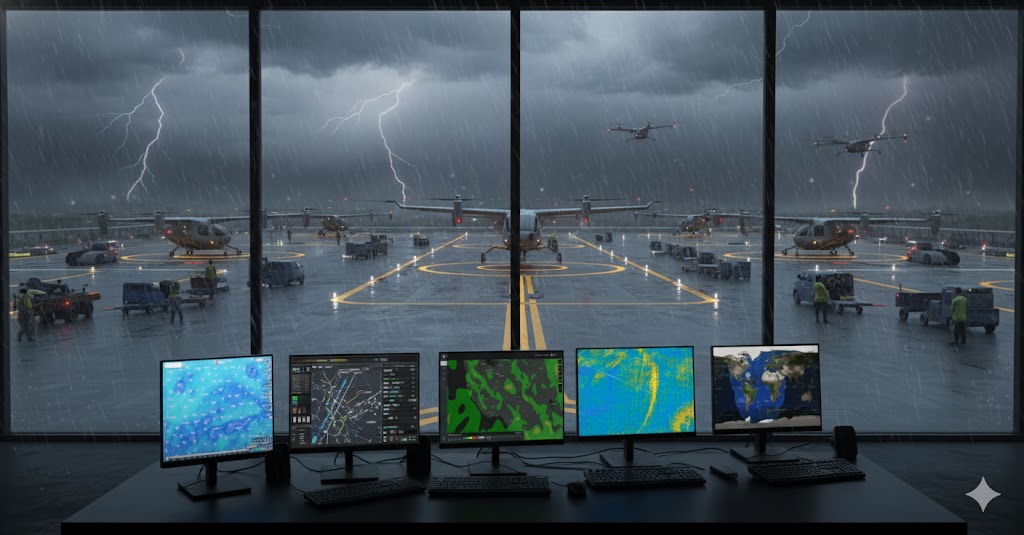Japan faces transportation pressures similar to those of many advanced economies. Japanese Cities struggle with severe congestion, while rural regions lose transport connections as their populations decline and age. Natural disasters routinely cut ground connections, isolating communities precisely when they need support most. Against this backdrop, Japan’s Ministry of Land, Infrastructure, Transport and Tourism has developed what may be one of the most methodical approaches to advanced air mobility.
The ministry’s four-phase roadmap doesn’t promise flying cars for everyone tomorrow. Instead, it outlines a cautious progression from test flights to full urban integration, treating AAM as essential infrastructure rather than a novelty in transportation. Working with the Ministry of Economy, Trade and Industry, MLIT has created a framework that positions Japan to lead the global shift to low-altitude aviation, addressing fundamental transportation gaps that ground-based solutions cannot solve.
Building the Foundation
MLIT’s approach centers on its Concept of Operations for Advanced Air Mobility, released in English in April 2024. The document defines AAM as next-generation air transport enabled by electrification, automation, and vertical takeoff and landing capabilities. This encompasses both Urban Air Mobility (UAM) and Regional Air Mobility (RAM), which facilitate longer connections between cities and remote regions.
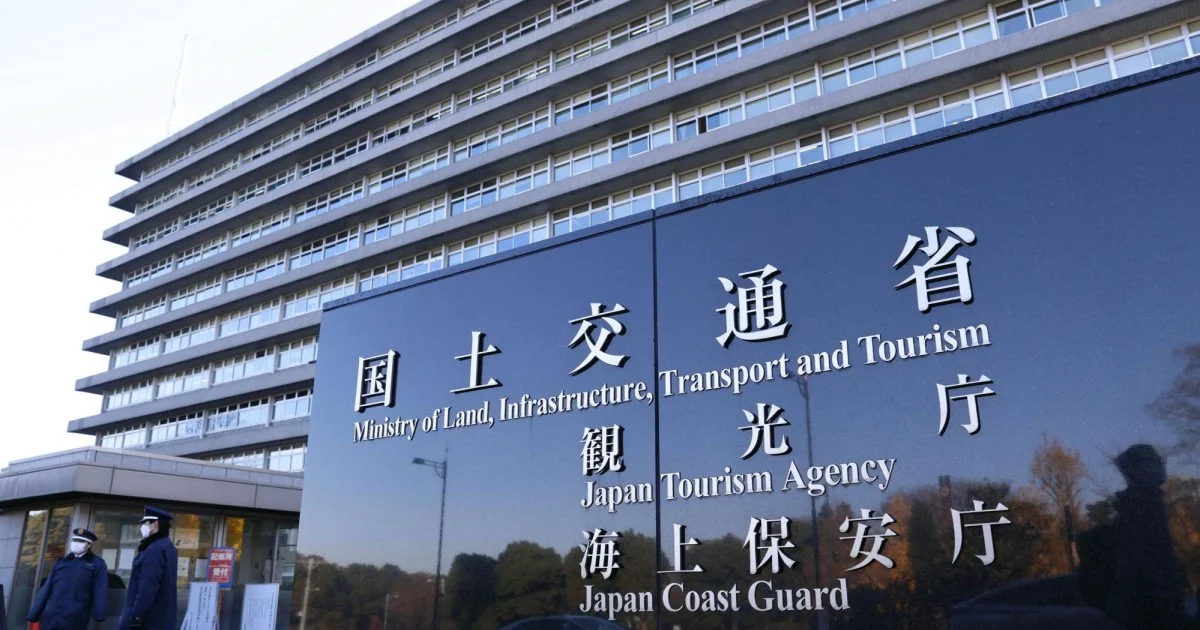 MLIT Headquarters Building
MLIT Headquarters Building
The ministry established a Public-Private Committee for Advanced Air Mobility, which informs the development of aircraft, vertiports, personnel, and operational standards through a staged implementation beginning in 2025. This committee expanded in 2025 to include major international players, such as Archer Aviation, alongside Japanese corporations from the real estate, engineering, and electronics industries, signaling a shift from guidelines to commercial deployment.
Rather than reinventing aviation regulation, MLIT adapts existing frameworks to handle eVTOL aircraft. The Civil Aviation Bureau created new categories within current structures, allowing operators to leverage established aviation expertise while accommodating electric vertical takeoff technologies. This evolutionary approach reduces manufacturer uncertainty by building on decades of safety experience rather than starting from scratch.
Aircraft Technology and Certification
MLIT’s framework accommodates multiple eVTOL design approaches, rather than favoring any specific technology. The ConOps identifies three primary aircraft configurations: multirotor designs utilizing multiple electric rotors for both lift and propulsion, lift-and-cruise aircraft that combine rotors for vertical flight with fixed wings for efficient cruise, and vectored thrust designs employing tilting propulsion systems.
Each approach offers distinct performance characteristics suited to different operational requirements. Multirotor aircraft excel at precise maneuvering in confined spaces but consume significant battery power during cruise flight, limiting their range to shorter urban routes. Lift-and-cruise designs extend operational range while maintaining vertical flight capabilities, but increase maintenance complexity. Vectored thrust aircraft promise the highest speeds and longest ranges, but require more sophisticated control systems and certification processes.
The regulatory framework classifies aircraft based on primary lift mechanisms rather than mandating specific designs. Multirotor types fall under rotorcraft regulations, while lift-and-cruise and vectored-thrust designs with fixed wings receive airplane certification. JCAB established Special Conditions for eVTOL aircraft in Circular No. 1-031 to standardize type certification processes, recognizing that existing airworthiness standards did not adequately anticipate the requirements of VTOL, electrification, and advanced automation.
SkyDrive’s certification progress exemplifies Japan’s systematic approach. The company received JCAB’s G-1 certification in February 2025, building on the March 2022 agreement to use the Airworthiness Inspection Manual Part II as the regulatory foundation. This certification basis provides the specific airworthiness and performance criteria required for type certification, creating templates that other manufacturers can reference while adapting to their aircraft-specific requirements.
Expo 2025: Where Vision Meets Reality
The 2025 World Expo in Osaka provides Japan’s first significant test of advanced air mobility, and the results reveal both promise and practicality. Three aircraft manufacturers brought different approaches to electric aviation: SkyDrive with its multirotor SD-05, LIFT Aircraft with the 18-motor HEXA, and Joby Aviation with its tilt-rotor S4.
SkyDrive proved that methodical development pays off. From July 31 to August 24, the SD-05 completed consistent five-minute demonstration flights over Osaka Bay, reaching an altitude of 27 meters and covering a distance of 720 meters per flight. These operations will extend through September at the urban Osakako Vertiport, marking the transition from controlled Expo conditions to real neighborhood environments.
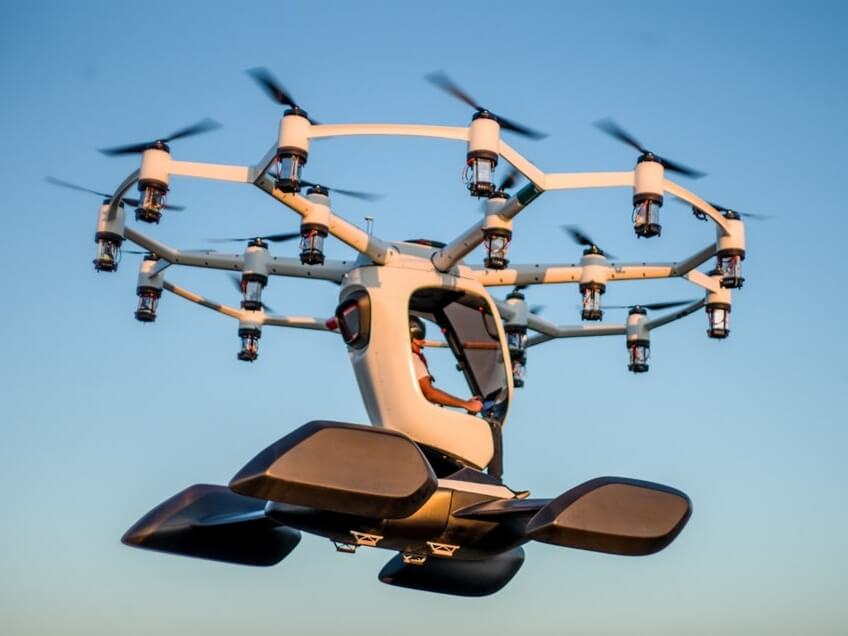 LIFT Aircraft HEXA in Flight
LIFT Aircraft HEXA in Flight
LIFT Aircraft learned harder lessons. On April 26, motor damage and airframe failure during flight demonstrations caused motor covers to fall onto the vertiport. No one was injured, but HEXA operations stopped pending investigation. The incident validates Japan’s cautious phase-by-phase approach and demonstrates why rushing to market carries real risks.
Joby Aviation’s October demonstrations will showcase the most sophisticated technology, with ANA-livered aircraft demonstrating vertical takeoff, forward flight transition, and precision landing. These flights represent the joint venture’s commitment to deploy over 100 air taxis across Japan, bringing international expertise to domestic operations.
The Expo reveals what works in controlled conditions and what fails under operational pressure. Japan’s systematic approach allows learning from both successes and setbacks without compromising public safety or confidence.
Japan’s Phased Path to Urban Flight
MLIT structures AAM development through four phases that progress from experimental flights to autonomous urban operations, with each phase building regulatory frameworks, operational experience, and public confidence.
The progression begins with Phase 0, where test flights and proof-of-concept demonstrations establish certification pathways. SkyDrive’s agreement with JCAB in March 2022 for the SD-05 certification basis exemplifies this foundational work, creating templates that other manufacturers can reference while adapting to their specific aircraft designs. This phase validates that Japan’s evolutionary regulatory approach works without requiring entirely new safety frameworks.
Phase 1 is expected to launch commercial services around 2025, with carefully constrained operations: low-density traffic, pilots aboard all passenger flights, and visual flight rules governing all operations. The 2025 World Expo demonstrates this phase in action, though real operational challenges have emerged. While SkyDrive completed consistent demonstration flights over Osaka Bay, LIFT Aircraft’s HEXA suffered motor damage and airframe failure in April, suspending operations and validating Japan’s cautious approach.
Phase 2 scales operations through the late 2020s by introducing medium- to high-density traffic with both piloted and remotely piloted aircraft. This phase requires more sophisticated vertiports integrated into urban infrastructure and advanced Urban Air Traffic Management systems that coordinate flight operations across designated airspace. The traffic management capabilities developed in Phase 1 expand from basic information exchange to include flight plan authorization and real-time conflict resolution.
Phase 3 targets high-density operations in the 2030s, with automated and autonomous flights integrated into a unified traffic management system covering entire metropolitan regions. Aircraft systems assume responsibility for navigation and collision avoidance. In contrast, ground-based systems provide oversight, creating the foundation for AAM to become a routine, daily transportation service rather than a specialized one.
Each phase builds systematically on the operational experience and regulatory learning of the previous one. The Expo’s mixed results, alongside successful SkyDrive operations and HEXA’s mechanical failures, demonstrate why Japan’s measured progression matters more than ambitious timelines. Real-world operational pressure reveals what works in controlled conditions and what requires additional development, informing the regulatory frameworks that will govern expanded operations in subsequent phases.
Managing Complex Airspace
Japan achieves airspace integration through careful separation, which gradually evolves toward unified management. Drones operate below 500 feet while eVTOL aircraft follow minimum safe altitude rules except during takeoff and landing. This creates a natural separation that only converges near vertiports and airports, where active coordination becomes essential.
UAM Service Areas provide the framework for scaling operations. These flexible airspace overlays coordinate flights across controlled and uncontrolled airspace based on traffic density. As operations mature, these areas expand to cover entire metropolitan regions with integrated management of conventional aircraft, eVTOL operations, and unmanned systems.
The traffic management system evolves with operational phases. Phase 1 provides basic information exchange and capacity management at busy ports. Phase 2 adds flight plan authorization and real-time conflict resolution. Phase 3 achieves full automation with comprehensive coordination across all airspace users, creating the foundation for high-density urban operations.
International Cooperation and Standards
Japan’s AAM development operates within a comprehensive framework of bilateral agreements and international standardization efforts, positioning the country as a global leader in harmonized certification approaches. The FAA-JCAB Declaration of Cooperation, signed in October 2022, formalizes ongoing discussions on certifying and validating new AAM aircraft, production oversight, continued airworthiness, operations, and personnel licensing.
This partnership extends the agencies ' long-standing relationship into advanced air mobility, enabling manufacturers to access multiple markets more efficiently while maintaining consistent safety standards. The declaration outlines specific objectives, including the exchange of information on policies and research, the sharing of knowledge and best practices, and the coordination of joint symposia and workshops. SkyDrive demonstrates this cooperation in practice, working simultaneously with both JCAB and FAA on certification processes to align efforts across both nations.
The Japan-EU Bilateral Aviation Safety Agreement provides similar streamlined processes with European regulators, reducing duplicative testing and certification costs while ensuring equivalent safety levels across jurisdictions. Japan actively participates in ICAO’s AAM Study Group, utilizing operational experience from Expo 2025 to inform the development of international guidelines. This positioning enables Japan to influence global standards while ensuring that domestic regulations align with emerging international consensus, creating pathways for Japanese-certified aircraft to operate worldwide and allowing international operators to integrate with Japanese systems.
Building Infrastructure for Scale
MLIT published provisional Vertiport Design Guidelines in December 2023, as ICAO standards are not expected to be finalized until 2028. These interim rules encompass a range of aspects, from landing pad dimensions to firefighting requirements, treating vertiports as specialized heliports under existing aviation law while anticipating future instrument flight capabilities.
The ministry’s 2025 vertiport classification committee distinguishes between urban “spot-type” facilities and suburban “base-type” operations that handle maintenance and storage. This hub-and-spoke pattern reflects the practical realities of dense urban operations while maintaining network efficiency.
The EXPO Vertiport showcases Japan's sophisticated infrastructure with two simultaneous parking spots, integrated charging systems, and digital connections to public transportation. Located in the Mobility Experience Area, it compresses lessons about throughput, turnaround times, and passenger processing that will inform the design of commercial facilities.
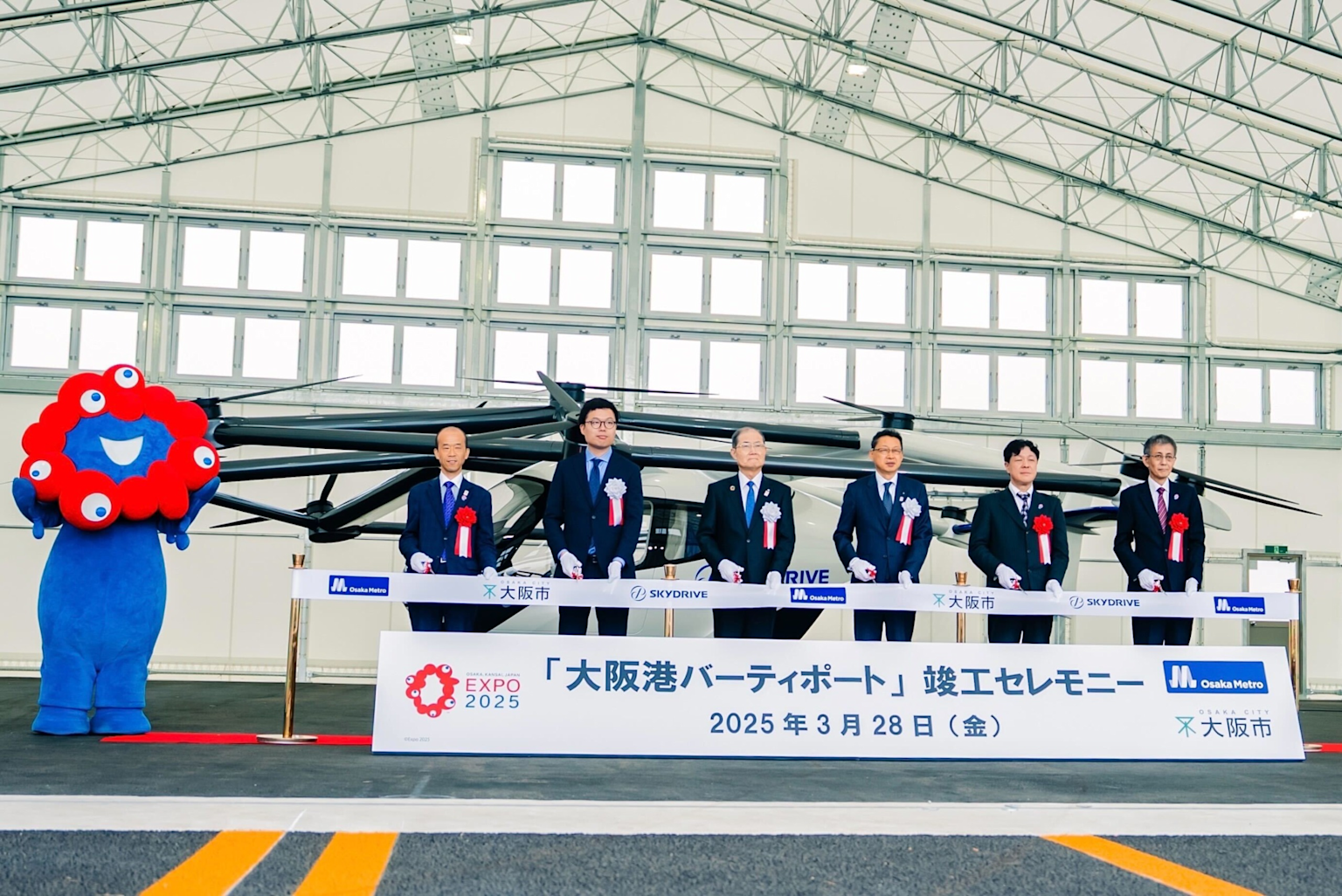 Official March 28, 2025 ribbon-cutting ceremony for the OSAKAKO Vertiport
Official March 28, 2025 ribbon-cutting ceremony for the OSAKAKO Vertiport
These infrastructure foundations now face their first real test as Japan transitions from demonstration to deployment. The operational data emerging from Expo 2025, both successes and setbacks, directly informs how the country will scale from experimental facilities to commercial networks.
Economic and Social Implications
The economic impact of AAM extends far beyond aircraft manufacturing to encompass a comprehensive ecosystem of supporting industries and services. Pilot and maintenance technician training, ground handling equipment, insurance services, and facility management create multiple employment opportunities. Integration with existing transportation networks enables new business models that leverage aerial mobility’s unique capabilities.
Commercial operators face significant challenges developing sustainable economics during Phase 1 operations. High aircraft costs, limited flight density, and substantial infrastructure requirements mean initial services will likely focus on high-value applications such as emergency medical transport, premium passenger services, and time-sensitive cargo delivery. The combination of expensive aircraft, restricted operating conditions, and relatively small markets necessitates that operators carefully target applications where aerial mobility offers clear advantages over ground transportation.
Regional revitalization represents the most significant long-term economic opportunity for AAM in Japan. Rural and mountainous areas, which suffer from population decline and transportation challenges, could benefit substantially from improved aerial connectivity. Japan’s regional revitalization policies, launched in 2014 when nearly half of Japan’s municipalities faced potential disappearance due to demographic decline, explicitly focus on creating jobs and improving transport connections to stem urban migration. AAM services connecting remote islands, mountainous communities, and disaster-affected areas can provide essential transportation links that conventional infrastructure cannot efficiently serve, while also creating local employment opportunities in aircraft operations, maintenance, and ground services.
Social acceptance remains critical to AAM success, with MLIT identifying safety, security, noise, visual impact, privacy, and environmental sustainability as key concerns requiring proactive community engagement. The ministry’s approach emphasizes building public familiarity through demonstration projects and educational initiatives rather than imposing aviation activities on unwilling populations. Programs like the Hyogo Advanced Air Mobility Laboratory work directly with students and residents to develop user-focused perspectives on AAM applications, building community understanding and addressing concerns before commercial operations begin.
From Demonstration to Deployment
Japan’s methodical approach positions the country to influence international AAM development while addressing domestic transportation challenges. The four-phase timeline provides a predictable progression from current experimental operations to full urban integration by the 2030s; however, the Expo results indicate that the theory must adapt to operational reality.
Post-Expo operations will test AAM’s transition from controlled demonstrations to regular service. Routes connecting airports to urban areas, serving tourist destinations, and linking remote communities will determine whether electric aviation can deliver practical transportation benefits at acceptable costs. The ministry’s August 2025 public-private council meetings addressed exactly these challenges, discussing how to expand commercial operations beyond Expo demonstrations while accommodating diverse aircraft types and enabling higher-capacity services.
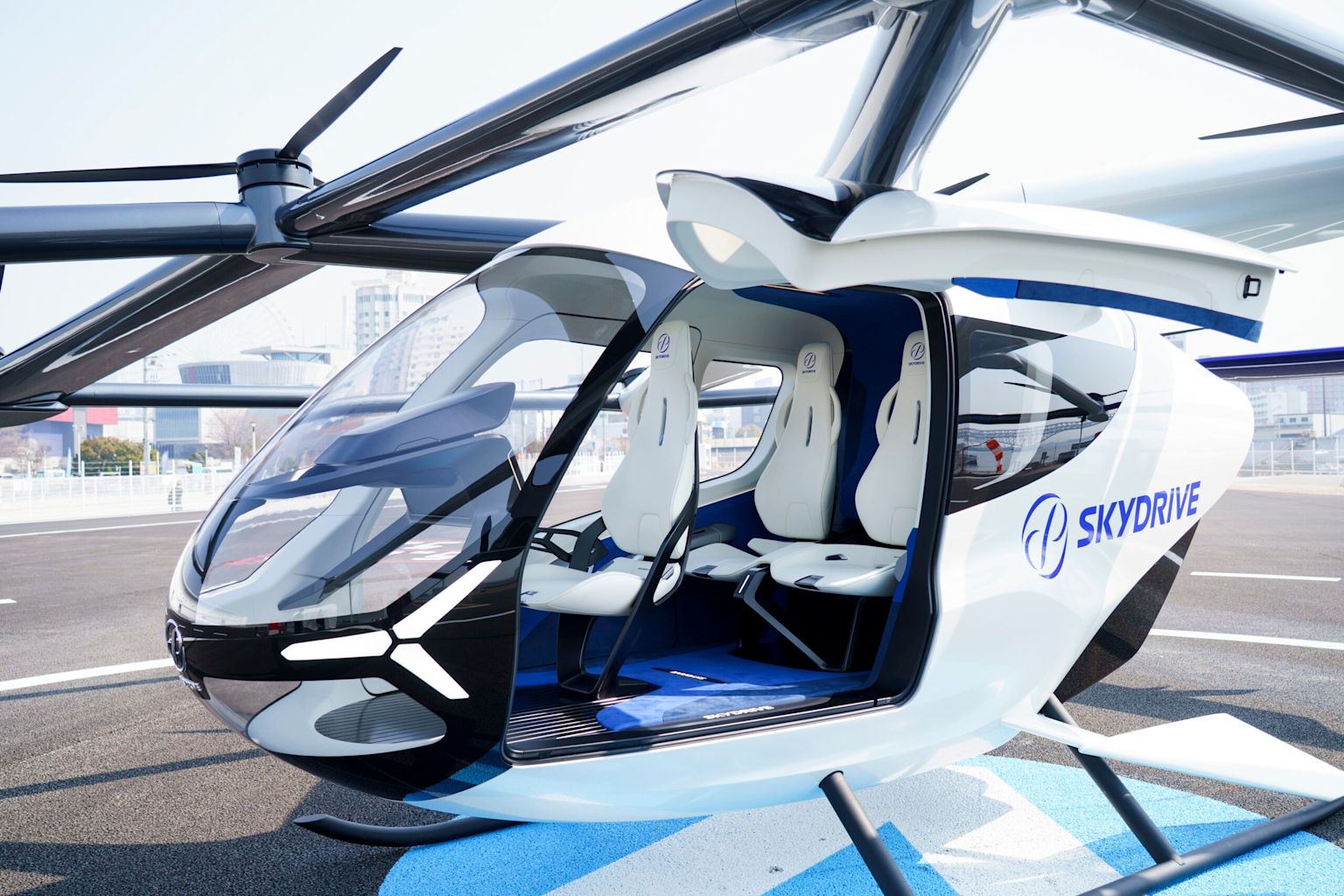 SkyDrive Interior View
SkyDrive Interior View
Technical challenges remain significant and interconnected. Battery energy density continues to limit the range and payload capacity of aircraft. Weather resilience affects schedule reliability. Air traffic management systems must evolve to handle mixed piloted and autonomous operations in complex airspace. The HEXA incident at the Expo demonstrates that even seemingly mature technologies can fail under operational pressure, validating Japan’s systematic approach over aggressive timelines.
Yet Japan’s comprehensive framework addresses these challenges methodically rather than expecting breakthrough solutions to emerge spontaneously. By building on proven aviation practices, fostering international cooperation, and maintaining rigorous safety standards, MLIT has created conditions for AAM to develop as essential transportation infrastructure rather than experimental technology.
The success of Japan’s approach will ultimately be measured not by the sophistication of its aircraft or the elegance of its regulations, but by whether citizens accept electric aviation as a regular part of their transportation options. The methodical progression from test flights to autonomous operations provides the time and operational experience necessary to build that acceptance while maintaining the safety standards essential for public confidence in low-altitude flight.
